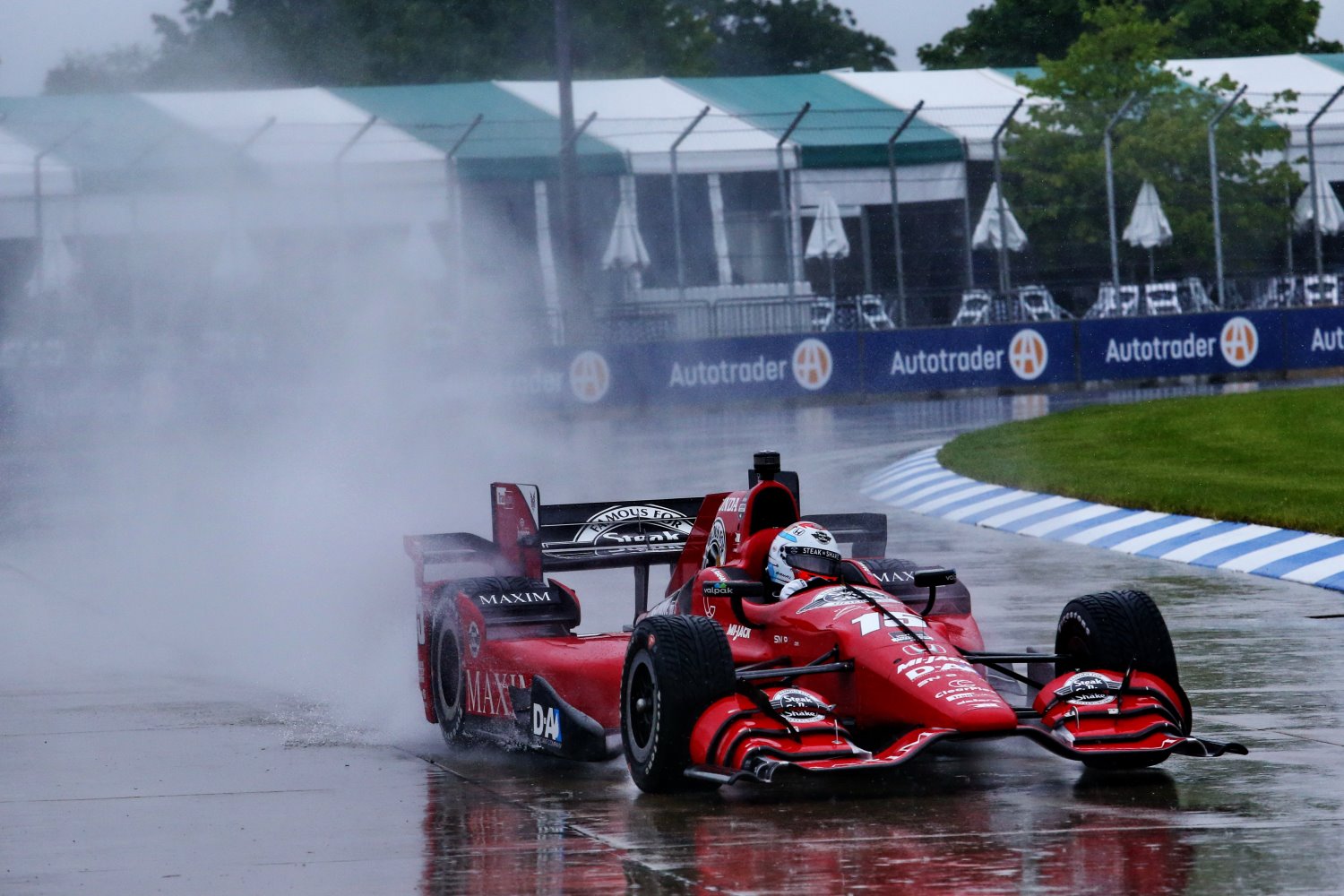Can IndyCar finally race in the rain?
 |
| Rahal in the rain at Detroit in 2015 |
IndyCar always claimed it could race in the rain, but whenever it rained the drivers would spin off course like rank amateurs.
Why? Because the rain tire was way too hard.
Why was it too hard?
Because IndyCar does not have an intermediate rain tire like F1 (Stupid) so the rain tire has to be a compromise, i.e. harder than it should be so it does not wear out too quickly in damp track conditions.
This ruined the show IndyCar put on every time it rained.
But now there is a chance Firestone can fix the issue.
Firestone Racing is set to bring new treaded tires for wet tracks this year, in response to the heavily reduced downforce of IndyCar’s spec aerokits to be used this season.
Cara Adams, Firestone’s chief engineer and manager of race tire development, in an interview with Motorsport.com said that the hugely increased importance of mechanical grip in a reduced-downforce era for the Verizon IndyCar Series has seen the company working on a heavily revised rain tire. Wet track surfaces prompt teams into adding a lot more downforce to maximize cornering grip, but the vast reduction in available downforce on this year’s IndyCar will prompt teams and drivers to seek more grip from the tire compounds.
During a long-form interview with Motorsport.com, Adams explained: “We’re working on our wet weather tires, coming up with a redesign of our tread pattern as well as compound changes. We won’t see that until Detroit at the very earliest, but it’s a really neat project that we’ve been able to work on with engineers and scientists from our entire engineering group and our pattern engineering group.
“We’re hoping to see those new wet tires in action in Detroit – there’s often rain at some point in that event – and it’s a pretty exciting program.
“We’ve used a lot of feedback from the teams and drivers to develop this new pattern. We’re confident it should be something that’s a good mix of answering the demands for road courses and street courses, and that will be good because it’s hard to get a tire that works for both."
Asked if the general idea was to not only soften the compound, but have the tread blocks move around more in order to generate more heat and therefore grip, Adams admitted “we’re keeping some of the details secret for now.
“But what I can tell you is that this pattern is going to be great for when the cars transfer load onto the pattern. There are things we were able to do in the design of this pattern that we weren’t able to do before, but ever-improving technology has allowed us to take a big step."
But still no talk of an intermediate tire, which would then allow the full rain tire to be much softer, as it is in F1. Why does IndyCar even bother to say it races in the rain, if every time they do the drivers look like rank amateurs and the pace car leads the most laps?
